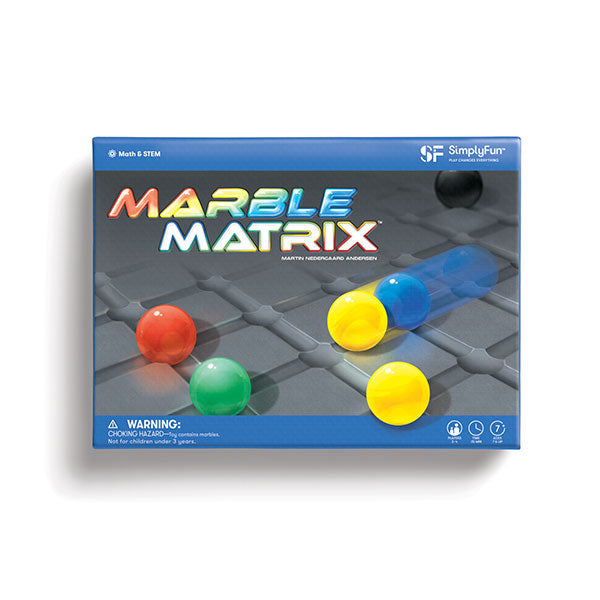
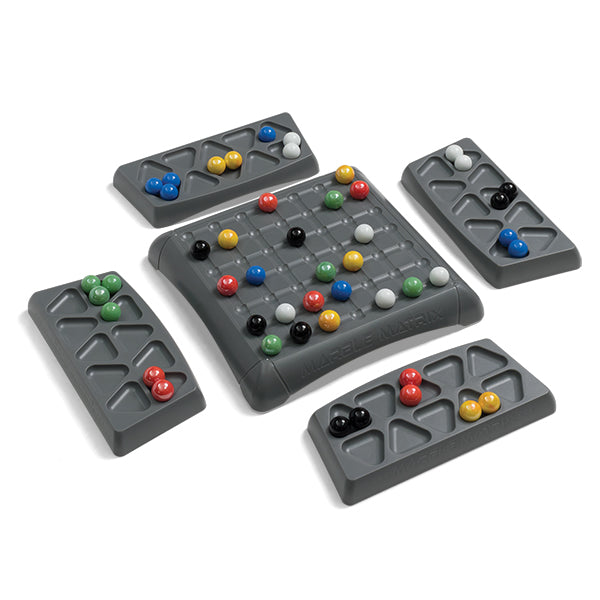






At the end of the game, players score one point for each set of three matching marbles in their storage tray. The player with the most points wins.
Collapsible content
A game where you slide marbles to create pairs and then collect them to earn points.
You can play Marble Matrix with 2 to 4 players, ages 7 and up.
Marble Matrix is good for developing Spatial Reasoning skills, as players compare the different movement options and choose the action that will create the highest number of adjacent matching marbles.
Marble Matrix also helps with Fine Motor skills. Players slide marbles across the game board so that they settle into their spaces.
Place the Marble Matrix game board in the center of the play area.
Randomly place all the marbles on the game board so that no two marbles of the same color are next to one another, either horizontally or vertically.
Leave the center space empty.
Each player receives a marble storage tray to store their collected marbles in.
Slide marbles across the grid so that two or more matching marbles line up. Then collect those matching marbles.
At the end of the game, players score one point for each set of three matching marbles in their storage tray.
The player with the most points wins.
On your turn study the matrix grid and slide one row of marbles, either vertically or horizontally across the board to create one or more sets of matching marbles.
A row is defined as a group of consecutive marbles on the same line without any gaps between them. A single marble can be considered a row.
A set is defined as two or more marbles that are the same color and are next to each other either vertically or horizontally, but not diagonally.
Your slide stops when the row reaches the next marble after an open space or the edge of the grid, whichever happens first.
It is possible to create a set of three marbles, or even multiple sets of marbles during one turn.
Collect all sets of marbles that are next to each other and place them in your storage tray. Then it is the next players turn.
Slides that are not allowed:
You may not stop your slide if there are still empty spaces, even if doing so creates a match.
And you may not continue a slide once an open space between two marbles is filled.
You must make a set in one slide whenever possible.
However,
You cannot avoid a valid set on your first attempt just to get a second slide in one turn.
If another player sees a match that can be made in one slide you must take their suggestions.
If you cannot create a set of matching marbles on your first slide, you are allowed a second slide.
The game ends when a player is unable to collect any marbles after two slides. Players count their marbles and score one point for each set of three matching-color marbles in their tray.
Players do not earn points for left over pairs or single marbles.
The player with the most points wins.
If there is a tie, the player with most left over matching pairs wins.
So grab your friends and family and get rolling with Marble Matrix


Core Standard*: Math
Math
- Operations and Algebraic Thinking
- Add and subtract within 20. Grade Level 2nd

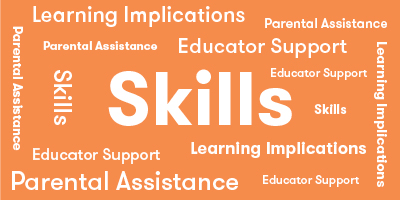
Explore
What Does Child Do To Use Skill In The Game?
On their turn, a player closely examines the game board to look for ways to move marbles to make color matches. All other players also look at the game board to see if a color match can be made with one slide of marbles.
How Parents Can Assist Learning
Often there are numerous matching opportunities on a player's turn. Remind younger children to look at the board carefully during play. This will discourage impulsive actions, and promote focus and self control.
Learning Implications and Educator Support
Playing Marble Matrix helps children develop spatial reasoning skills, situational analysis, risk assessment and perspective changing. Remind younger children to look at the board carefully during play, making sure to look for matches of more than 2 marbles, matches that help child collect at least 3 of a colored, and matches that can prevent other players from getting the colors they want. This will discourage impulsive actions, and promote focus and self control.
Determine
What Does Child Do To Use Skill In The Game?
Players decide which marbles can be moved to make color matches, and determine which to move to get the color match they want.
How Parents Can Assist Learning
Often there are numerous matching opportunities on a player's turn. Remind younger children to look at the board carefully during play, and to look at the colors other players are collecting. This will help children think both tactically and strategically.
Learning Implications and Educator Support
Marble Matrix involves examining the board and creating mental models of the consequences of sliding different marbles. When first learning to play, players may only think about matching colors to collect on their turn. As they become more proficient, they will engage in more complex strategy and goals like trying to collect all 6 of a color or blocking others from collecting certain colors. Thus, players are not only considering the tactics of sliding marbles to make matches, but also determining when to be more strategically offensive and defensive during the game. Often there are numerous matching opportunities on a player's turn. Remind younger children to look at the board carefully during play, and to look at the colors other players are collecting. This will help children think both tactically and strategically.
Compare
What Does Child Do To Use Skill In The Game?
Players compare options for sliding marbles prior to determining which marble(s) to slide.
How Parents Can Assist Learning
To help children, have them describe aloud the different options they see and how they help the child score and prevent other players from scoring. Ask specific questions such as, "Look at these two options. Which would be for scoring points?" Verbalizing is a good technique for strengthening the child's analytical abilities and problem-solving.
Learning Implications and Educator Support
As children compare options for sliding marbles, they are learning situational analysis and spatial reasoning. To help children, have them describe aloud the different options they see and how they help the child score and prevent other players from scoring. Ask specific questions such as, "Look at these two options. Which would be for scoring points?" Verbalizing is a good technique for strengthening the child's analytical abilities and problem-solving.
Predict
What Does Child Do To Use Skill In The Game?
Marble Matrix involves a little prediction. As players' collect marbles, you can more accurately predict what colors they will pursue.
How Parents Can Assist Learning
If you notice children seem not to be considering the moves of other players, remind them look at the marbles collected by others prior to deciding what marbles to match on their turn. Help them think about the impact of varying plays on their score as well as limiting the points of the other players. For example, ask children to describe aloud the potential reward and cost making a color match. Does it help them increase their score, or block another player from scoring? To help children evaluate different options, encourage them to "Wait. Look. Think."
Learning Implications and Educator Support
In order to make predictions, children use spatial reasoning, risk and reward analysis, and complex comparison. Also, children need to change perspective, imagining being their opponents, in order to have optimal predicting skills. Educators may want to ask open ended questions to encourage more thoughtful analysis and prediction. For example, "What options do you see? How will the marbles you slide help you score or prevent others from scoring? What do you think others are trying to collect? What do you think an opponent might do in response? Is your strategy to maximize points or block opponents from scoring?" To help children evaluate different options, encourage them to "Wait. Look. Think."
Plan
What Does Child Do To Use Skill In The Game?
Based on comparing, players plan which marble row or rows to slide in order to achieve a color match. Additionally, players plan throughout the game as they try to get marbles of the same color in order to score the most points.
How Parents Can Assist Learning
If a child is having difficulty seeing possible matches, provide hints like "I can see how to make a blue marble match."
Learning Implications and Educator Support
If a child is having difficulty seeing possible matches, provide hints like "I can see how to make a blue marble match."
Practice
What Does Child Do To Use Skill In The Game?
Like chess or checkers, Marble Matrix has multiple levels of complexity that players will master the more they play the game.
How Parents Can Assist Learning
When learning this game, play several rounds collaboratively. Talk about different moves and the consequences of each.
Learning Implications and Educator Support
Marble Matrix has several implicit levels of mastery. Therefore, the more children play the more capable they will be in developing and executing increasingly sophisticated strategies. As they become proficient, they will be able to teach others. Teaching others demonstrates mastery, the final stage of learning, and is wonderful for building self-esteem, confidence and intrinsic motivation.
Solve
What Does Child Do To Use Skill In The Game?
Players need to adapt plans and strategies as other players move and collect marbles. Ultimately, winning the game requires logic, reasoning and problem-solving.
How Parents Can Assist Learning
As the game is being learned, children may not make the highest scoring or most strategically helpful color matches. If you see this, ask them to share their thinking and what they might do differently next time. After children have mastered the basics, they learn new information constantly during game play. This information directly effects how children decide which marbles to slide and color matches to make. The ability to shift strategies based on new information can help children cope with the stresses of change in other areas of their life.
Learning Implications and Educator Support
Marble Matrix involves significant spatial reasoning and understanding, if/then problem-solving, and directionality. As the game is being learned, children may not make the highest scoring or most strategically helpful color matches. If you see this, ask them to share their thinking and what they might do differently next time. After children have mastered the basics, they learn new information constantly during game play. This information directly effects how children decide which marbles to slide and color matches to make.
*Data compiled from CCSSI ELA Standards, WA Science Standards, and Washington Social Studies Standards

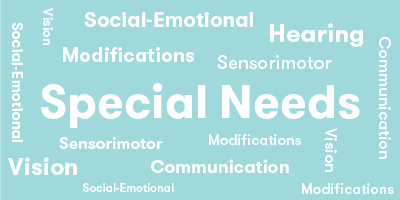
Cognitive
Suggestions for How to Modify Play Experience
Not appropriate for children with cognitive delays. The game requires visual spatial reasoning and strategic thinking.
Communication
Suggestions for How to Modify Play Experience
No communication is needed, to play Marble Matrix, but players can be encourage to name the colors they want to match or explain their thinking for each move. This will help them practice communication.
Sensorimotor
Suggestions for How to Modify Play Experience
If the child has fine motor concerns, play with a partner. The players decide together which row to move, and then the partner without fine motor concerns moves the marbles.
Social Emotional/Behavioral
Suggestions for How to Modify Play Experience
Marble Matrix is highly motivating, so the game should not be too frustrating. The turns are fast and will encourage persistence.
Vision
Suggestions for How to Modify Play Experience
The board is visually complex, so Marble Matrix is not recommended for children with uncorrected visual concerns.
Hearing
Suggestions for How to Modify Play Experience
Children who are deaf or hard of hearing should be able to play Marble Matrix without modifications.
*Data compiled from CCSSI ELA Standards, WA Science Standards, and Washington Social Studies Standards

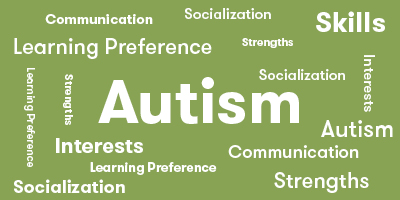
Autism Strengths & Interests
Short Summary of Strengths & Interests
- Spatial reasoning
- Strategic thinking
- Sequencing
Is good at matching visual items
Is This Game Appropriate? Yes
Description
That is the primary goal of the game. Players move marbles to align so that the marbles of the same color match.
Has a good memory for sensory details, including visual, touch, taste and smell
Is This Game Appropriate? No
Description
This game is not appropriate
Has a good memory for words, phrases and dialouge
This game is not appropriate
Has a good memory for pictures, numbers and patterns
Is This Game Appropriate? Yes
Description
Players examine the board to see how moving a row of marbles will change the existing marble arrangement to one where marbles of the same color align. Players who can remember how previous moves were accomplished can benefit from using similar moves as the game proceeds.
Likes to put things in order or a sequence
Is This Game Appropriate? Yes
Description
Players need to attend to the sequence of the marbles and how moving a row will enable them to align various colored marbles.
Learns through visualizing or "replaying" actions in their mind
Is This Game Appropriate? Yes
Description
Players need to visualize what the board will look like when various rows are moved. Players who can quickly visualize the results of various moves will have an advantage in Marble Matrix.
Likes activities with rules, such as math and phonics
This game is not appropriate
Is very concrete and literal
Is This Game Appropriate? Yes
Description
The game is won by having the most sets of three marbles of the same color. This is very concrete.
Learns in small "chunks" (for example, phone numbers are 3 chunks of number xxx-xxx-xxxx that are combined together)
This game is not appropriate
Is good at nonverbal reasoning and logic
Is This Game Appropriate? Yes
Description
Marble Matrix is a game of nonverbal reasoning, requiring visualizing how moving varioius rows will realign marbles. Players also need to understand which marbles can be moved and how far they need to be moved according to the rules of the game.
Likes spatial problem solving
Is This Game Appropriate? Yes
Description
Players need to analyze the board to determine how they can align the most marbles of the same color. Some moves may align two marbles, but another move may align three or more marbles. Players also need to understand which marbles can be moved and how far they need to be moved according to the rules of the game.
Can read well with good vocabulary, though may not fully comprehend content
This game is not appropriate
Likes to use and has good fine motor skill
Is This Game Appropriate? Yes
Description
Fine motor skills are needed to move the marble rows. Players need to carefully and slowly move a row in order to keep all marbles on the board stable.
Likes established routines or set ways of doing things
This game is not appropriate
Likes manipulating, constructing or building things
This game is not appropriate
Likes to use and has good musical abilities
This game is not appropriate
Likes to use and has good drawing skills
This game is not appropriate
Autism Special Considerations
Appears to ignore other's communication and/or has difficulty giving eye contact to a communication partner
Is This Game Appropriate for Child with Characteristic? Yes
Can Child with Characteristic Play Game w/o Modification? Yes
Strategies for Developing Compensatory Skills:
Players do not need to look at or listen to other players comments to be able to play Marble Matrix. They can concentrate on the arrangement of the marbles on the board.
Has difficulty understanding complex verbal directions
Is This Game Appropriate for Child with Characteristic? Yes
Can Child with Characteristic Play Game w/o Modification? No
Strategies for Developing Compensatory Skills:
The rules for how to slide marbles involve understanding three specific rules: moving a row of any consecutive marbles, stopping when another marble or the end of a row is reached, and a second move can be made if one move cannot result in a match. Play several practice rounds to help the child understand the rules. Also, If remembering rules for play is problematic, other players can monitor the child's play and remind them if a rule is forgotten.
Uses vocabulary inaccurately or demonstrates echolalia (repeating another's speech)
Is This Game Appropriate for Child with Characteristic? Yes
Can Child with Characteristic Play Game w/o Modification? Yes
Strategies for Developing Compensatory Skills:
As long as other players can ignore irrelevant comments, echolalia should not be a problem. Players can try to build on the players comments to shift the topic to the game.
Gets stuck repeating a verbal topic or physical actions and/or has difficulty attending to others' actions or topic.
Is This Game Appropriate for Child with Characteristic? No
Can Child with Characteristic Play Game w/o Modification? No
Strategies for Developing Compensatory Skills:
Players need to attend to all players move to be able to monitor the changing board.
Has difficulty producing speech/communication
Is This Game Appropriate for Child with Characteristic? Yes
Can Child with Characteristic Play Game w/o Modification? Yes
Strategies for Developing Compensatory Skills:
Communication is not necessary, so communication concerns should not be an issue in Marble Matrix.
Has difficulty sequencing multi-step actions and/or doing complex abstract tasks
Is This Game Appropriate for Child with Characteristic? No
Can Child with Characteristic Play Game w/o Modification? No
Strategies for Developing Compensatory Skills:
Demonstrates difficulty initiating and maintaining social interactions
Is This Game Appropriate for Child with Characteristic? Yes
Can Child with Characteristic Play Game w/o Modification? Yes
Strategies for Developing Compensatory Skills:
Social interaction is not needed, so this should not be a problem in Marble Matrix.
Acts out or demonstrates avoidance behaviors when frustrated, overwhelmed, or needs more sensory input.
Is This Game Appropriate for Child with Characteristic? Yes
Can Child with Characteristic Play Game w/o Modification? No
Strategies for Developing Compensatory Skills:
Many children can focus better after some active gross motor activity, such as running or jumping. Encourage players to all do something active together before playing. Also, provide opportunities for the child to obtain needed sensory input before the child's turn. For example, use a fidget toy to allow the child to refocus as needed.
Has short attention span for non-preferred activities
Is This Game Appropriate for Child with Characteristic? Yes
Can Child with Characteristic Play Game w/o Modification? No
Strategies for Developing Compensatory Skills:
If a child likes visual spatial games like checkers, chess or the classic Dots and Boxes, Marble Matrix is a good choice.
Needs sameness or consistent routines and/or has difficulty with transitions from one activity to another
Is This Game Appropriate for Child with Characteristic? No
Can Child with Characteristic Play Game w/o Modification? No
Strategies for Developing Compensatory Skills:
The board changes with each move. This may be frustrating for children needing "sameness" or repetitive play.
Has difficulty understanding others' feelings, intentions, and the reasons for others' actions.
Is This Game Appropriate for Child with Characteristic? Yes
Can Child with Characteristic Play Game w/o Modification? Yes
Strategies for Developing Compensatory Skills:
Players do not need to understand others' thoughts or feelings. They just need to follow the moves on the board.
*Data compiled from CCSSI ELA Standards, WA Science Standards, and Washington Social Studies Standards

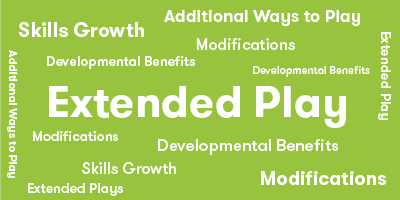
Extra Ways to Play the Game
Add an element of motivation to try to win multiple marbles. Play so that if you get four of one color in a turn, you can steal two of the same color from other player(s).
Materials Needed
No additional materials needed.
Developmental Benefits
To obtain four of one color requires players to study the board in more detail and visualize alignments of marbles with various options. This modification encourages players to be more strategic in their play.
Extra Ways to Play the Game
If you earn two pair, you can steal one marble of either color of the pairs from another player.
Materials Needed
No additional materials needed.
Developmental Benefits
To obtain two pair of different colored marbles requires players to study the board in more detail and visualize alignments of marbles with various options. This modification encourages players to be more strategic in their play.
*Data compiled from CCSSI ELA Standards, WA Science Standards, and Washington Social Studies Standards
Game Details
At the end of the game, players score one point for each set of three matching marbles in their storage tray. The player with the most points wins.
- 1 Gameboard
- 48 Marbles (8 of each color)
- 4 Marble Storage Trays
- 1 Storage Bag
- 1 Rules Booklet
- Choosing a selection results in a full page refresh.
- Opens in a new window.










